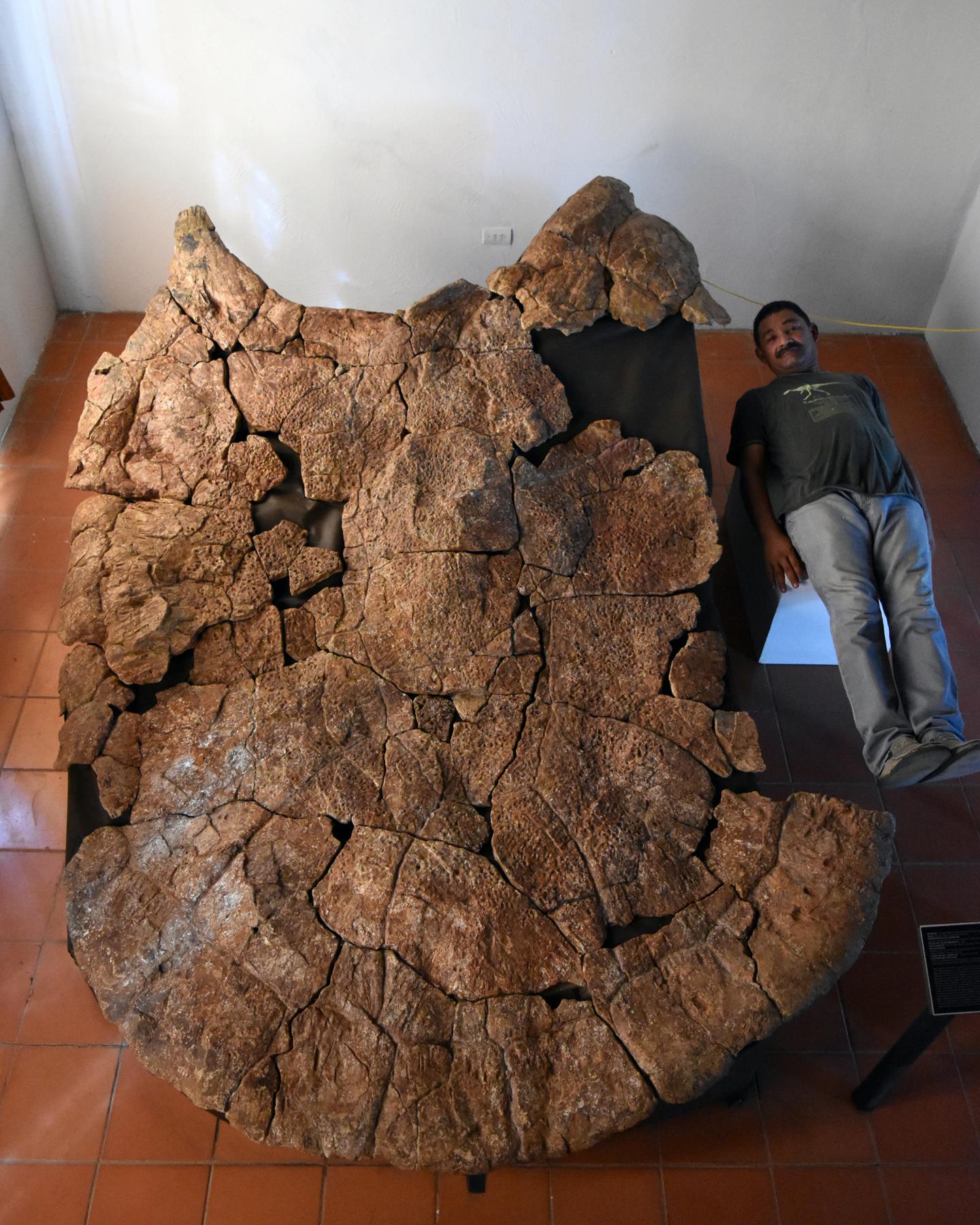Researchers have uncovered complete fossils of the giant turtle Stupendemys geographicus in Venezuela and Colombia. The fossils, including a gigantic top shell and the first examples of S. geographicus jaw bones, give new insight into the lives of ancient South American giant turtles.
Although the fossils were dug up in deserts, five to ten million years ago the land that’s now northeast Brazil, Peru, Colombia and Venezuela was covered in deep swamps and rivers that supported giant reptiles. The paper, published in Science Advances on February 12, shows that S. geographicus turtles had shells up to ten feet across. For comparison, a standard United States freeway lane is 12 feet wide.
It was “one of the largest, if not the largest turtle that ever existed,” says University of Zurich paleobiologist Marcelo Sánchez in a statement.

The creatures, which at 2,500 pounds weighed nearly as much as a hippopotamus, were not just massive but also well-armed. New specimens found by the research team have a foot-long horn on each shoulder, and one horn had a long scar down its side. Sánchez says that the horns were likely used by males to battle for mates.
The horns would also have been useful defense against predators like 40-foot crocodile-like caimans that were longer than a standard telephone pole is tall. Several of the shells show bite marks, and one had a tooth still embedded in it.
https://www.smithsonianmag.com/smart-news/these-giant-turtles-fought-epic-battles-10-million-years-ago-180974203/